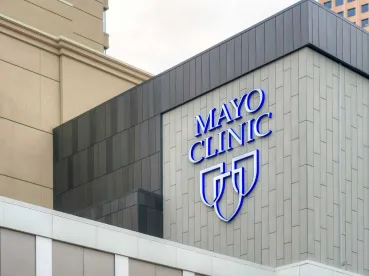Tax-exempt organizations, while not generally subject to tax, are subject to tax on their “unrelated business taxable income” (“UBTI”). One category of UBTI is debt-financed income; that is, a tax-exempt organization that borrows money directly or through a partnership and uses that money to make an investment is generally subject to tax on a portion of the income or gain from that investment.[1] However, under section 514(c)(9),[2] “educational organizations” are not subject to tax on their debt-financed income from certain real estate investments.
The Mayo Clinic in Minnesota is one of the country’s leading hospitals. Between 2003 and 2012, the Mayo Clinic was a partner in a partnership that borrowed money to make real estate investments.[3]
On November 22, 2022, U.S. District Court for the district of Minnesota held that the Mayo Clinic qualified as an educational organization within the meaning of section 514(c)(9) and, therefore, was not subject to tax on the debt-financed income from the partnership.[4]
Discussion
As mentioned above, while charitable and certain other tax-exempt entities are generally exempt from tax, they are subject to tax on UBTI—including income from “debt-financed property,” which is, roughly speaking, income generated by property where the property was financed by debt.[5] UBTI is taxed at the regular corporate rate (21%) for tax-exempt entities that are organized as corporations.[6] However, section 514(c)(9) provides that an “educational organization” as described in section 170(b)(1)(A)(ii) will not incur tax on income from certain debt-financed property. An educational organization as described in section 170(b)(1)(A)(ii) is one that “normally maintains a regular faculty and curriculum and normally has a regularly enrolled body of pupils or students in attendance at the place where its educational activities are regularly carried on.”[7] Treasury Regulations section 1.170A-9(c)(1) defines an educational organization as one described in section 170(b)(1)(A)(ii) “if its primary function is the presentation of formal instruction” and if the organization’s noneducational activities are merely incidental to its educational activities.[8]
The Mayo Clinic is a public charity exempt from tax under section 501(c)(3). It was founded to offer medical education, provide high quality medical clinical care, and conduct medical research, among other activities. In 2009, the IRS conducted an audit of the Mayo Clinic and asserted that it owed $11.5 million in taxes for certain income arising from its debt-financed property, in this case certain income from partnerships, earned from 2003 to 2012.[9] The Mayo Clinic paid the disputed taxes, and timely filed suit for a refund in the U.S. District Court of Minnesota.[10]
The District Court found the Mayo Clinic to be organized and operated for exclusively educational purposes and found that the Mayo Clinic could be classified as an educational organization.[11] First, the Court found that, under the totality of circumstances, the Mayo Clinic’s operations merited a system-wide test of its primary purpose.[12] Next, the Court analyzed the Mayo Clinic’s system-wide activities and found a substantial educational purpose because it was organized and founded to provide quality medical education, and it has continued to do so throughout its existence, including by operating five accredited schools and medical care facilities largely staffed by medical faculty that provide medical treatment and conduct research to further medical students’ studies.[13] Additionally, the Court found the Mayo Clinic’s medical care and research functions to be necessary for and inextricably intertwined with its educational purpose, and its lab testing activities supported the provision of medical care and student training and also had an educational purpose, in addition to a medical purpose.[14] Accordingly, the Court found all of the Mayo Clinic’s patient care, lab testing and research activities to be educational because they served in part an educational purpose, and those activities should be credited towards a finding that the primary purpose of the Mayo Clinic is education.[15]
As for the test to determine whether any exclusively non-educational activities are more than “merely incidental,” the Court found that only the Mayo Clinic’s administrative activities could be potentially non-educational. Regardless, the Court found them to be clearly incidental to the Mayo Clinic’s other activities because they would not be conducted but for the other activities.[16] Accordingly, the Court determined that the Mayo Clinic qualifies as an educational organization because its primary purpose is educational and it has no non-educational activities that are more than incidental.
The reasoning of the District Court—that the Mayo Clinic is an exclusively educational organization within the meaning of the UBTI debt-financed income exception under section 514(c)(9)—would, if applied by other courts, potentially allow other tax-exempt entities that have activities that serve educational and non-educational purposes to be classified as educational organizations (and thus entitled to the benefits of more relaxed UBTI debt-financed income rules). However, the District Court’s opinion is subject to appeal to the 8th Circuit, and there is significant doubt as to whether the ruling will remain in effect. Considering the extensive patient care activities of the Mayo Clinic, the Circuit Court may narrow or even overturn the decision entirely.
FOOTNOTES
[1] IRC §§ 511(a), 512, 514(a)(1).
[2] All references to section numbers are to the Internal Revenue Code, unless otherwise specified.
[3] Mayo Clinic v. United States, 412 F. Supp. 3d 1038, 1042-43 (D. Minn. 2019).
[4] Mayo Clinic v. United States, 2022 BL 419596 (D. Minn. Nov. 22, 2022).
[5] IRC §§ 511(a), 512, 514(a)(1).
[6] For tax-exempts organized as trusts, UBTI is taxed at the regular trust rates (including lower rates for long term capital gains).
[7] IRC § 170(b)(1)(A)(ii).
[8] Treas. Reg. § 1.170A-9(c)(1).
[9] 412 F. Supp. at 1042-43.
[10] Id.
[11] 2022 BL 419596 at 46.
[12] Id. at 33.
[13] Id at 37-39.
[14] Id.
[15] Id. at 42-44.
[16] Id. at 45-46.






 />i
/>i

